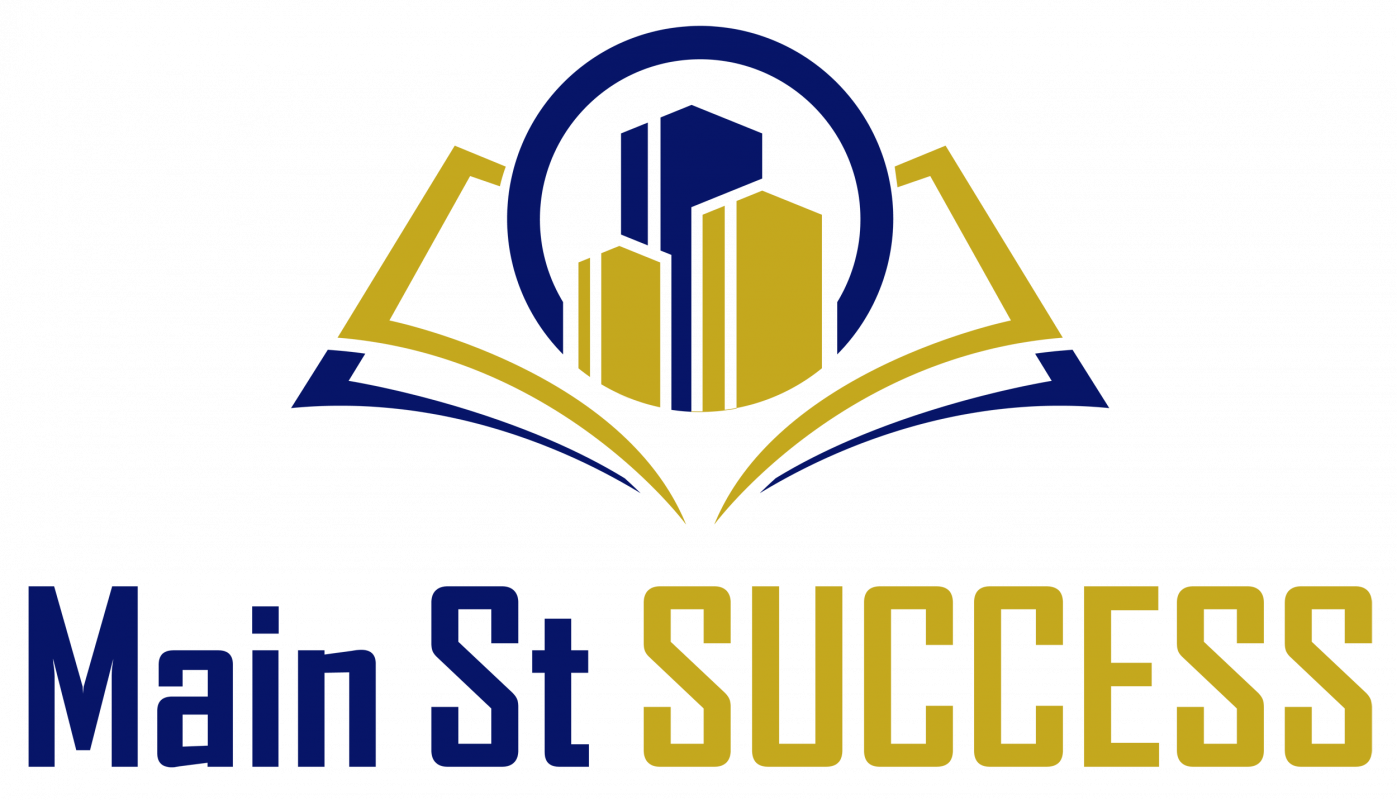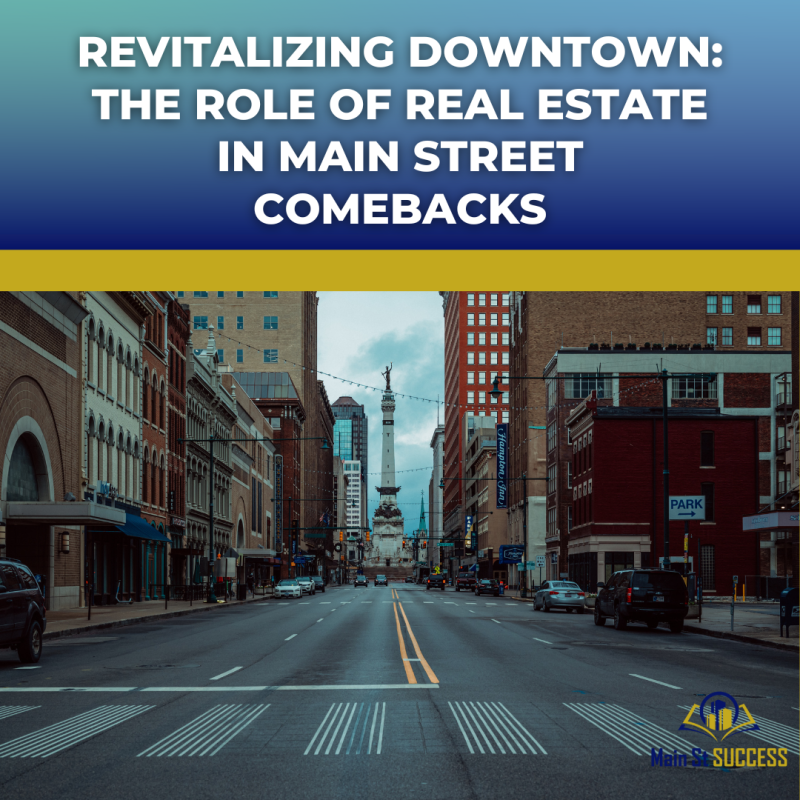Blog
Revitalizing Downtown: The Role of Real Estate in Main Street Comebacks
In towns and small cities across the country, once bustling Main Streets have gone through cycles of boom, decline, and renewal. Economic shifts, suburban expansion, and big box retail left many downtown districts struggling. Over the past decade, people have begun rediscovering the value of walkable, vibrant, mixed use downtown areas.
Real estate plays a central role in these comebacks. From restoring historic buildings to reimagining underused spaces, the decisions property owners, investors, and city planners make can set the tone for a Main Street revival.
Why Downtowns Matter
Downtown districts are more than just shopping areas. They are cultural and economic anchors for their communities. When they thrive, they attract visitors, create jobs, and strengthen local identity. A healthy Main Street often becomes a town’s calling card, influencing both residents’ quality of life and the broader perception of the community.
The real estate component is impossible to overlook. Well maintained storefronts, active upper floors, and thoughtfully planned public spaces can make the difference between a downtown that feels alive and one that feels neglected.
The Role of Commercial Real Estate
Commercial properties are often the most visible part of a downtown comeback. The types of businesses that fill these spaces and how those spaces are designed shape the character of Main Street.
Successful revitalization projects usually focus on attracting a mix of tenants. Independent shops and restaurants bring character, while professional services help stabilize foot traffic during daytime hours. Flexible lease terms, shared spaces, and small scale units can help entrepreneurs take the leap without the risk of oversized overhead.
When commercial landlords invest in restoring facades, upgrading interiors, and making spaces accessible, they are not just improving a single property. They are contributing to the overall health of the district.
Mixed Use Development as a Growth Engine
One of the most powerful tools for Main Street renewal is mixed use development. Combining residential units with commercial space brings people downtown at all hours. Residents shop locally, dine in nearby restaurants, and walk to work or public transit.
Upper story apartments or condos above retail spaces have become a common feature of revitalized downtowns. This arrangement benefits both landlords and the community. Property owners gain additional income streams, and the district gains built in activity and security after business hours.
In many cases, zoning adjustments are needed to make mixed use feasible. Communities that are serious about downtown revival often revisit their regulations to encourage upper floor housing and live work spaces.
Historic Preservation and Adaptive Reuse
For many Main Streets, architectural heritage is one of their greatest assets. Restoring historic buildings can be more challenging than new construction, but it often pays off by attracting tenants and visitors who value authenticity.
Adaptive reuse, which means converting older buildings for new purposes, can also breathe new life into downtown properties. An old bank might become a restaurant, a former department store could turn into coworking space, or a warehouse could become loft style apartments.
These projects can qualify for tax incentives, grants, or low interest loans, especially in communities that prioritize historic preservation. The combination of financial support and cultural value makes adaptive reuse a cornerstone of many downtown revitalization plans.
Residential Demand and the Urban Lifestyle Shift
Not long ago, living downtown was considered impractical in many small towns. Today, that is changing. Millennials, downsizing baby boomers, and remote workers are showing increased interest in walkable neighborhoods with cultural amenities close by.
Real estate developers who recognize this shift are creating residential projects that cater to these demographics. Smaller units, minimal commuting needs, and proximity to entertainment appeal to a wide range of buyers and renters. Even modest residential growth can have an outsized impact on Main Street activity, supporting local businesses and making the area feel safer and more vibrant.
Public Private Partnerships and Incentives
Revitalization rarely happens without collaboration between property owners, local governments, and community organizations. Public private partnerships can take many forms:
- Grants or low interest loans for facade improvements
- Tax abatements for historic restoration
- Streetscape enhancements funded by municipal budgets
- Streamlined permitting for adaptive reuse projects
These incentives make it easier for real estate investors and small business owners to take risks on downtown properties. When the public sector shows commitment to revitalization, private investors are more likely to participate.
Overcoming Challenges
Downtown real estate projects come with obstacles. Construction costs, limited parking, and aging infrastructure can all slow progress. Some communities also face the challenge of balancing revitalization with affordability, ensuring that longtime residents and businesses are not priced out of the district they helped shape.
Real estate professionals can help by advocating for balanced growth, seeking tenants who align with the community’s vision, and exploring creative financing to make projects viable.
The Ripple Effect of a Healthy Main Street
When a downtown area comes back to life, the benefits extend far beyond the district itself. Property values in surrounding neighborhoods often rise. Local governments see increased tax revenue. Tourism improves, and community pride grows stronger.
In many cases, success in the core inspires improvements in other parts of town, creating a cycle of investment and renewal. Real estate, both commercial and residential, is at the center of this transformation.
The Bottom Line
Main Street comebacks are rarely accidental. They require vision, investment, and a willingness to adapt historic charm to modern needs. Real estate professionals, whether they are developers, investors, brokers, or property managers, have the tools to shape that process.
By restoring buildings, encouraging mixed use spaces, and aligning projects with current lifestyle trends, they can help transform underused downtowns into thriving hubs once again.
The comeback of Main Street is not just about real estate values. It is about creating places where people want to gather, do business, and call home. That is a legacy worth building.

